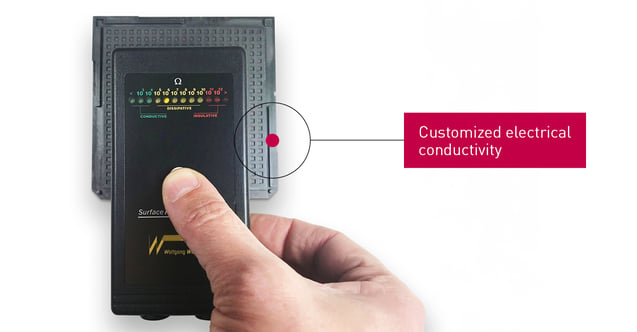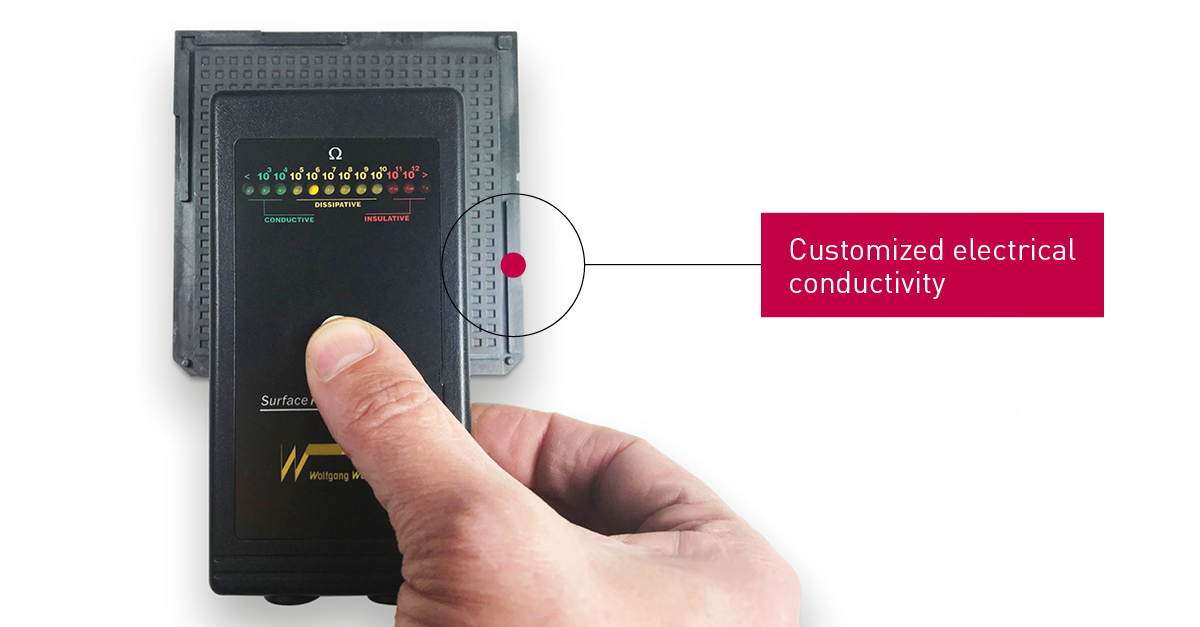Electrically conductive plastic compounds: experience (plus innovative strength) makes the master.

For material developers, the art of compounding electrically conductive compounds consists of integrating various conductive fillers and reinforcing materials into a polymer matrix. For a compound that meets even the most detailed requirements for other structural properties - be it mechanical strength, stiffness or toughness, for example. And we do this consistently over the long term - batch after batch. Like all arts, this is not something that can be mastered "just like that". But a great deal can be achieved within several decades ...
A long time ago! Electrically conductive compounds first came onto the market around 50 years ago.
Electrically conductive plastic compounds began their triumphal march as early as the 1970s. They very quickly replaced metals in applications - where electrostatic discharge or electrical conductivity was required - by opening up previously unknown design scope and increasing productivity. This then revolutionary new group of materials made modern office and textile processing machines and electrical assemblies a reality.
The development engineers and chemists at LEHVOSS have been involved in this market segment with their own division since 1983. With a focus on the aforementioned office and textile machines, the material developers began to build up a portfolio that today ranges from standard thermoplastics (such as PP or PS) to engineering plastics (such as PC, PC/ABS, PBT or PA) and high-performance plastics (such as PEI, PPS or PEEK).
The continuous integration of polymers and innovative additives or fiber reinforcements was and is crucial here. In addition to conventional/traditional materials such as carbon fibers, graphite and metal fibers, this also includes innovative approaches such as carbon nanotubes (CNT). These were already being used in LEHVOSS compounds at the beginning of the 2000s.
The consistent further development of electrically conductive compounds through technological excellence: from the free combinability of filler technology and polymer.
The ability to transfer a filler technology to any polymer offers a wide range of advantages:
- Versatility of applications: Independence from a specific polymer allows the experienced compounder to use a wide range of polymers with different properties. This increases the versatility of electrically conductive compounds and opens up application possibilities in various branches of industry.
- Adaptation to practically any requirement: Different industries and applications require different material properties and therefore the use of different polymers and additives. The expertise in using filler technology to match the polymer enables compounders to develop customized solutions for even the most specific requirements.
- Optimization of material performance: The choice of polymer and additives is made according to the desired properties of the end product. Independence in terms of raw material selection enables a really good compounder to choose the most suitable polymer and additive(s) for the application in question and at the same time achieve the desired electrical conductivity properties.
- Flexibility in material procurement: If a compounder can work independently of a specific polymer, this significantly increases flexibility in terms of material procurement. It enables both the freer use of available or preferred polymers on the market and easier raw material procurement. This is advantageous both economically and technologically, as the most suitable material can always be used according to the decisive parameters.
- Expanded innovation potential: The compounder can research different material combinations and develop new types of electrically conductive compounds that better meet the constantly changing requirements of the market.
Innovation through precision. The best example: The exact setting options for ohm and gigahertz ranges
Both in terms of the absorption behavior of radar sensors, for example, and in the context of deliberate, precisely controlled conductivity management, the ability to precisely adjust an electrically conductive compound is a key factor in ensuring that materials meet the specific requirements of different applications. A really good compounder is able to adjust the electrical conductivity of a compound in a range from 105 to 107 ohms, for example, or to adjust the absorption behavior for radar sensors at 77 gigahertz.
Conclusion: Adaptability to the application is the be-all and end-all
The requirements for electrically conductive compounds have changed, in some cases diametrically, since the "early days" in the 1970s. Developments in microelectronics and nanotechnology, miniaturization and the extreme expansion of application technologies are constantly posing new challenges for compounds.
A good example of this is the topic of isotropy: To ensure isotropy in electrically conductive components such as wafer carriers, an excellent compounder must be able to distribute conductive materials homogeneously in the polymer matrix, control the compounding process with high precision, adapt formulations and have a deep understanding of the material structure. On the one hand.
On the other hand, he must also have a deep understanding of application technology and, above all, understand and "master" the interaction between material developers, chemists, material scientists, part designers and part producers.
LEHVOSS can do that. Try it out. Contact us with confidence. We understand and compound what really matters.
Further information on our material expertise "Conductivity" can be found on the website:

